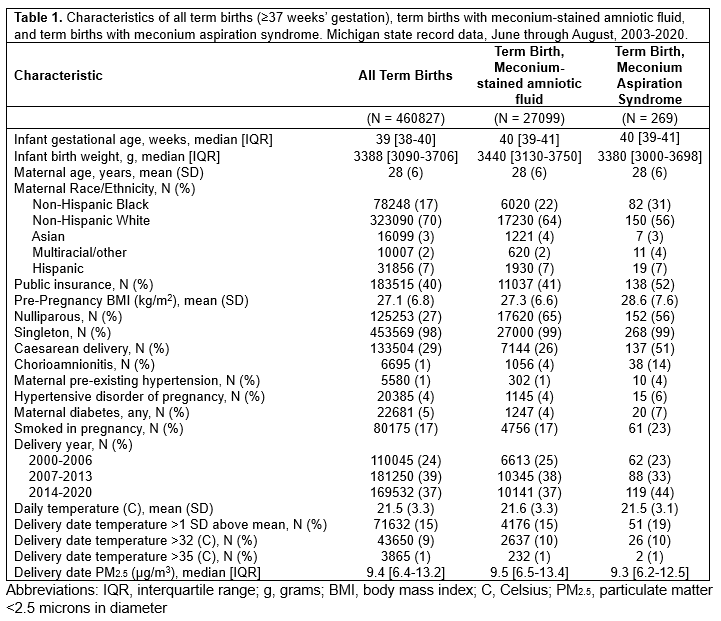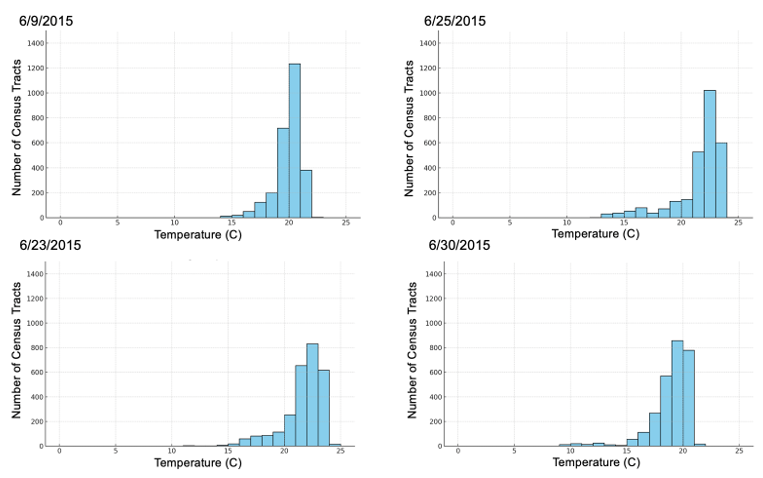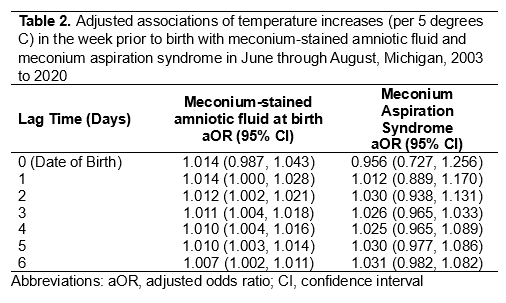Environmental Health 1
Session: Environmental Health 1
444 - Associations of short-term increases in temperature with meconium at delivery and related birth outcomes during summer months: A case-crossover analysis
Sunday, April 27, 2025
8:30am - 10:45am HST
Publication Number: 444.3693
Timothy Nelin, Childrens Hospital of Philadelphia, Philadelphia, PA, United States; Nicolas P. Goldstein Novick, Children's Hospital of Philadelphia, Rose Valley, PA, United States; Joshua Radack, Childrens Hospital of Philadelphia, Boston, MA, United States; Allan Just, Brown University School of Public Health, Providence, RI, United States; Scott A. Lorch, The Children's Hospital of Philadelphia, Philadelphia, PA, United States; Heather H. Burris, Children's Hospital of Philadelphia, Philadelphia, PA, United States

Timothy Nelin, MD (he/him/his)
Attending Physician
Childrens Hospital of Philadelphia
Philadelphia, Pennsylvania, United States
Presenting Author(s)
Background: While excessive heat exposure has been associated with several adverse birth outcomes, the impact of heat exposure on the presence of meconium-stained amniotic fluid and meconium aspiration syndrome has not been reported.
Objective: To quantify the association of short-term increases in temperature with the presence of meconium-related perinatal outcomes during the summer months using a time-stratified case-crossover design.
Design/Methods: We analyzed data from a database of 460,827 summer term births (June-August) in Michigan from 2003 to 2020. The database was created by linking Michigan Department of Health birth certificates and infant death certificates matched to maternal and newborn hospital records. Geocoded residential addresses and a machine-learning model estimated daily residential census tract temperature and fine particulate matter (PM2.5) exposures. We evaluated associations of short-term increases in temperature (per 5 deg C) in the week prior to birth with meconium-stained amniotic fluid (primary outcome) and meconium aspiration syndrome (secondary outcome) using time-stratified case-crossover analyses adjusted for PM2.5. Each individual case period was defined as the day of birth (lag 0) plus days leading up to birth (lags 1-6). We compared case periods to control periods of the same length that started on the same weekday in the same month. By comparing exposure periods within the same individual, case-crossover studies avoid confounding by time-invariant characteristics, long-term trends, and day-of-week effects.
Results: There were 27,099 cases of meconium-stained fluid and 269 cases of meconium aspiration syndrome (Table 1). Several characteristics associated with meconium-stained amniotic fluid such as higher birthweight, longer gestation, first-born status, and chorioamnionitis. Substantial regional and temporal variation in temperature existed (Fig 1). We detected an association of temperature with meconium-stained amniotic fluid; for lag times >2 days, infants had 0.7-1.2% higher odds per 5 deg C (Table 2). We did not detect significant associations of temperature with meconium aspiration for any lag period, but all point estimates with lags >0 were positive and ranged from 1.2-3.1% higher odds per 5 deg C.
Conclusion(s): Short term increases in temperature were associated with meconium-stained amniotic fluid at delivery. While lacking significance, likely due to small sample size, point estimates were also positive for meconium aspiration syndrome. Future studies should focus on periods of extreme heat, as these may translate to adverse perinatal outcomes.
Table 1. Characteristics of all term births (≥37 weeks’ gestation), term births with meconium-stained amniotic fluid, and term births with meconium aspiration syndrome. Michigan state record data, June through August, 2003-2020.

Figure 1
 Figure 1. Distribution of temperature exposure predictions for Michigan census tracts over one example case period and three corresponding example control periods. Significant regional and temporal variation existed over the case and control periods. Temperature estimates were generated using XGBoost-IDW Synthesis for air temperature (XIS-Temperature), a high-resolution machine-learning model for daily minimum, mean, and maximum air temperature, covering the contiguous US from 2003 through 2023. XIS-temperature uses remote sensing incorporating land surface temperature and vegetation along with a parsimonious set of additional predictors to make predictions at arbitrary points, allowing the estimation of address-level temperature exposures. Reference: Allan C Just, Kodi B Arfer, Johnathan Rush, et al. XIS-Temperature: A daily spatiotemporal machine-learning model for air temperature in the contiguous United States. ESS Open Archive . September 23, 2024.
Figure 1. Distribution of temperature exposure predictions for Michigan census tracts over one example case period and three corresponding example control periods. Significant regional and temporal variation existed over the case and control periods. Temperature estimates were generated using XGBoost-IDW Synthesis for air temperature (XIS-Temperature), a high-resolution machine-learning model for daily minimum, mean, and maximum air temperature, covering the contiguous US from 2003 through 2023. XIS-temperature uses remote sensing incorporating land surface temperature and vegetation along with a parsimonious set of additional predictors to make predictions at arbitrary points, allowing the estimation of address-level temperature exposures. Reference: Allan C Just, Kodi B Arfer, Johnathan Rush, et al. XIS-Temperature: A daily spatiotemporal machine-learning model for air temperature in the contiguous United States. ESS Open Archive . September 23, 2024.Table 2. Adjusted associations of temperature increases (per 5 degrees C) in the week prior to birth with meconium-stained amniotic fluid and meconium aspiration syndrome in June through August, Michigan, 2003 to 2020


